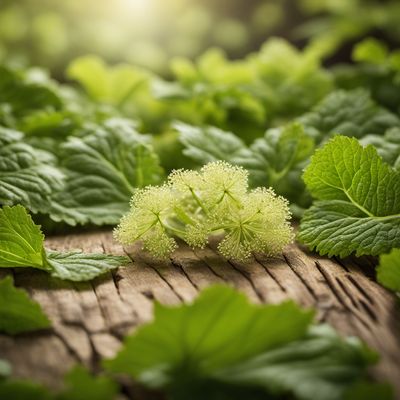
Ingredient
Olive infusion leaves
The Essence of Olive Infusion Leaves
Olive infusion leaves are small, dark green leaves that are infused with the distinct flavor of olives. They have a slightly bitter taste and a strong aroma reminiscent of olive oil. These leaves are commonly used in Mediterranean cuisine to enhance the flavor of sauces, marinades, and dressings. They can also be used as a garnish or steeped in hot water to make a fragrant tea.
Origins and history
Olive infusion leaves have a rich history dating back to ancient times. They have been used in Mediterranean cooking for centuries, particularly in Greek and Italian cuisines. Olive trees are native to the Mediterranean region, and their leaves have long been treasured for their culinary and medicinal properties. In addition to their culinary significance, olive leaves have also been used in traditional medicine for their potential health benefits.
Nutritional information
Olive infusion leaves are low in calories and fat, making them a healthy addition to various dishes. They are also a good source of antioxidants and have anti-inflammatory properties. Additionally, they contain compounds that may help lower blood pressure and improve heart health.
How to select
When selecting olive infusion leaves, look for fresh, vibrant leaves that are free from blemishes or discoloration. The leaves should have a strong aroma, indicating their freshness. If possible, choose leaves that are organically grown to ensure they are free from pesticides or other chemicals.
Storage recommendations
To maintain the freshness of olive infusion leaves, store them in a sealed container or plastic bag in the refrigerator. They can last for up to a week when stored properly. Alternatively, you can freeze the leaves for longer-term storage. To do so, blanch the leaves in boiling water for a few seconds, then transfer them to an ice bath to cool. Pat them dry and place them in a freezer-safe bag or container.
How to produce
Olive trees can be grown in regions with a Mediterranean climate, characterized by mild winters and hot, dry summers. They require well-drained soil and plenty of sunlight. With proper care and maintenance, olive trees can be grown in home gardens or larger orchards.
Preparation tips
Olive infusion leaves can be used in various ways in the kitchen. They can be added to sauces, soups, and stews to infuse them with a subtle olive flavor. They can also be used as a garnish for salads, pasta dishes, or grilled meats. Additionally, you can steep the leaves in hot water to make a refreshing tea with a unique aroma and taste.
Culinary uses
Olive infusion leaves are commonly used in Mediterranean cuisine, particularly in Greek and Italian dishes. They are often added to sauces, marinades, and dressings to enhance the flavor. They can also be used as a garnish for various dishes, adding a touch of elegance and aroma. In addition to culinary uses, olive infusion leaves are also used in traditional medicine for their potential health benefits.
Availability
Olive infusion leaves are commonly available in Mediterranean countries such as Greece, Italy, Spain, and Turkey. They can also be found in specialty stores or online retailers that offer Mediterranean ingredients.
More ingredients from this category » Browse all

Centaury infusion leaves
The Healing Herb

Alfalfa infusion leaves
The Green Powerhouse: Alfalfa Infusion Leaves

Marshmallow infusion leaves
The Sweet Essence of Nature

Wood betony infusion leaves
The Healing Power of Wood Betony

Passion flower infusion leaves
"Nature's Tranquilizer: Unveiling the Secrets of Passion Flower Infusion Leaves"

Heather infusion leaves
Heavenly Heather Elixir

Eyebright infusion leaves
The Visionary Herb: Exploring the Benefits of Eyebright Infusion Leaves

Oat infusion leaves
The Soothing Elixir: Oat Infusion Leaves

Wild angelica infusion leaves
The Herbal Elixir: Unveiling the Magic of Wild Angelica Infusion Leaves

Cornflower infusion leaves
"The Vibrant Elixir: Unveiling the Beauty of Cornflower Infusion Leaves"

Elder infusion leaves
The Healing Elixir: Unveiling the Power of Elder Infusion Leaves

Downy hemp nettle infusion leaves
The Herbal Elixir: Downy Hemp Nettle Infusion Leaves